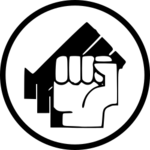International Revolutionary Army
| International Revolutionary Army | |
|---|---|
| आन्तरराष्ट्रीय क्रान्तिकारी लश्कर (Antararastriya Krantikari Laskara) | |
 | |
| Leaders | Dinesh Satyadava (1914-1922)
|
| Dates of operation | 1911-1980 |
| Ideology | |
| Part of | Various national militaries |
The International Revolutionary Army of the Workers and Warriors, also known as the International Revolutionary Army, the Green Pardal Front, and the Green Warriors, was an international paramilitary force that was instrumental in the decolonization of Central Coius. The original units were active only in Satria Libera, but because of their initial successes, they were able to arm sister organizations throughout Central Coius. It was active from 1914 to 1922 under the leadership of Dinesh Satyadava and then as related, but not unified organizations, from 1923 to 1980.
History
The organization was originally formed as the Green Pardal Brigade by Dinesh Satyadava and his friends in 1914 at the #3 Saahl Mining Camp in Free Satria after Dinesh’s brother-in-law was killed in an incident with employees of the Torrazzine Mining Company. Dinesh was able to gain access to the mining company’s armory and escaped into the nearby forest. The Green Pardal Brigade quickly expanded as other insurgent groups began to organize. Dinesh was able to make contact with Estmere, which supplied the Green Pardal Brigade with additional arms, hoping to destabilize Etrurian control of Satria and to gain an ally who would prevent insurgent attacks on Estmerish holdings.
For five years, Dinesh was able to levage his access to weaponry to organize and control many of the insurgent groups in Etrurian Sataria. This larger organization was called the Green Pardal Front for their flags, which often had a green panther or leopard motif. Dinesh died in a firefight with Togoti nomads who were relaying information to the Pardarian colonial government. Dinesh was viewed favorably by the Kirenian people and his death prompted a group of twenty Kirenian and Chistovodian volunteers to join the Pardals.
After the Treaty of Keisi in 1935, the Green Pardals were heralded as heroes across the continent. Famous generals took tours of the new free Coius and became legimators of many of the new governments. After a brief surge in recruitment, it dropped to nearly nothing within a year. Green Pardal units were later eliminated from several countries during their Normalisations, but most were incorporated into regular armed forces or disarmed.
Notable Units & Members
- Green Pardals of Saahl (extinct)
- Dinesh Satyadava (commander)
- Green Pardals of Samrin (incorporated into Zorasan)
- People's Liberation Army (incorporated into Chanda)
- Green Pardals of Cyrus (incorporated into Kumuso)
- National Liberation Force (extinct)
- Warriors for Liberation (extinct)
- Green Pardal Warriors (extinct)
- Green Army of Coius (disarmed 1950)
- Satar Agre (commander)
- Free Pardal Army (disarmed, became Peasants and Workers Democratic Satrian Congress)
- Zarif Naga (commander, KIA 1948)
- Arjuna Kalsarah (major ally/commander)
Legacy
The Green Pardals are often seen as symbols of the anti-colonial movement. After the purges of the mid 20th century, almost all Green Pardal units are effectively disarmed and are only active in ceremonial capacities.
Criticism
Even after Etruria had surrendered claims to Coius, Green Pardals continued to attack and kill Etrurians. During the infamous Bucker Creek incident, a unit of Green Pardals under the command of Harish Dam opened fire on a convoy of Etrurian refugees. For this event, and others like it, the Green Pardals are considered terrorists in many Euclean countries, with the notable exception of Gaullica, which still considers them freedom fighters.